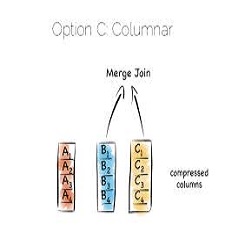توضیحات
ABSTRACT
B2B E-commerce (B2B EC) is a technology that supports relationship between business partners. In adopting such technology, power exercise plays a crucial role. Misunderstood power exercised within B2B EC may generate unrealistic or inaccurate outcomes. Unfortunately, the role of power exercise is nearly ignored in B2B EC adoption literature. In response, using the Resources-Dependency-Theory (RDT) and Diffusion- Innovation-Theory (DIT), this paper argues on the interaction between the influence of innovation characteristics and power exercise, so as to explain B2B EC adoption. This proposition could improve understanding B2B EC adoption and help to resolve inconsistency of findings in the literature.
INTRODUCTION
Due to the invention of Information and Communication Technologies (ICT), advanced means of technology have been introduced and deployed by organizations to conduct their business activities and transactions with other organizations. ICT introduces e-business world which generally refers to implementing ICT in support of all business activities (Beynon-Davies, 2004). Increasing global interdependence, free trade and reduced entry barriers, have motivated many organizations to conduct businesses globally. Moreover, technological advancement, lower cost of transactions, and increased awareness of e-business benefits, attract many non-adopting organizations as well (Al-qirim, 2010). B2B EC as part of e-business world, is defined as an inter-organizational technological innovation that enables inter-firm process integration and allows supply chain partners to trade and share information online (Sila, 2013). It has changed the pattern of business transactions conducted between firms globally as well as domestically and has provided substantial benefits to organizations. Earlier studies on Information Systems (IS) have acknowledged that B2B EC diffusion has a positive impact on business performance. Specifically, it improves customer service, enhances inventory control, reduces marketing and distribution costs, and minimizes operational costs (Tarofder, Marthandan, Mohan & Tarofder, 2013). Despite various claims of e-business benefits, previous researches have manifested slow progress in adopting ebusiness technology, especially in the context of B2B EC. Progress among developing countries goes slower than expected as compared to other developed countries (Molla & Licker, 2005; Penttinen & Tuunainen, 2011; Tan, Chong, Lin & Eze, 2009; Wong, Ngan, Chan, & Chong, 2012). From another perspective, the decision to adopt B2B EC among firms in developing countries becomes necessary in response to challenges of globalization. In this era, there is a trend by firms in developed countries to merge and extend their supply chain to firms operating in developing countries.
چکیده
B2B E-Commerce (B2B EC) یک فن آوری است که از ارتباط بین شرکای تجاری پشتیبانی می کند. در تطبیق چنین فن آوری، تمرین قدرت نقش مهمی ایفا می کند. قدرت ناخوشایند که در داخل B2B EC اجرا می شود ممکن است نتایج غیر واقعی یا نادرست ارائه کند. متاسفانه، نقش آموزش قدرت تقریبا نادیده گرفته شده در ادبیات تصویب B2B EC است. در پاسخ، با استفاده از تئوری وابستگی منابع (RDT) و تئوری نوآوری-diffusion (DIT)، این مقاله بر تعامل بین نفوذ ویژگی های نوآوری و تمرینات قدرت استدلال می کند تا توضیح EB EC را توضیح دهد. این گزاره می تواند به درک تقاضای ECC در اروپا کمک کند و به حل و فصل ناسازگاری یافته ها در ادبیات کمک کند.
مقدمه
با توجه به اختراع فن آوری اطلاعات و ارتباطات (ICT)، ابزار پیشرفته تکنولوژی سازمانها برای سازماندهی فعالیت های تجاری و انجام معاملات با سازمان های دیگر معرفی شده و توسط آنها سازماندهی شده اند. ICT دنیای کسب و کار را معرفی می کند که عموما اشاره به اجرای ICT در حمایت از تمامی فعالیت های تجاری است (Beynon-Davies، 2004). افزایش وابستگی جهانی، تجارت آزاد و کاهش موانع ورود، انگیزه بسیاری از سازمان ها برای انجام تجارت در سطح جهانی است. افزون بر این، پیشرفت تکنولوژیکی، هزینه های کمتر معاملات و افزایش آگاهی از مزایای تجارت الکترونیک، جذب بسیاری از سازمان های غیر سازنده نیز (القیریم، 2010). B2B EC به عنوان بخشی از دنیای کسب و کار الکترونیکی، به عنوان یک نوآوری تکنولوژیکی بین سازمانی تعریف شده است که امکان ادغام فرآیندهای داخلی را فراهم می کند و به شرکای زنجیره تامین اجازه می دهد تا اطلاعات آنلاین را به صورت آنلاین و به اشتراک بگذارند (سیلا، 2013). این الگوی انجام معاملات تجاری بین شرکت ها در سطح جهانی و داخلی را تغییر داده و مزایای قابل توجهی را برای سازمان ها به ارمغان آورده است. مطالعات قبلی در مورد سیستم های اطلاعاتی اذعان کرده اند که انتشار B2B EC تأثیر مثبتی بر عملکرد تجاری دارد. به طور خاص، آن را بهبود خدمات به مشتری، افزایش کنترل موجودی، کاهش هزینه های بازاریابی و توزیع، و به حداقل رساندن هزینه های عملیاتی (Tarofder، Marthandan، Mohan و Tarofder، 2013). علیرغم ادعاهای متفاوتی از مزایای کسب و کار الکترونیکی، تحقیقات قبلی پیشرفت های آهسته در اتخاذ تکنولوژی تجارت الکترونیک، به خصوص در زمینه B2B EC، نشان داده است. پیشرفت در کشورهای در حال توسعه نسبت به سایر کشورهای توسعه یافته نسبت به سایر کشورهای توسعه یافته، کمتر از حد انتظار است (Molla & Licker، 2005؛ Penttinen & Tuunainen؛ 2011؛ Tan؛ Chong؛ Lin & Eze؛ 2009؛ Wong؛ Ngan؛ Chan؛ Chong؛ از منظر دیگر، تصمیم به تصویب B2B EC بین شرکت های در کشورهای در حال توسعه در واکنش به چالش های جهانی شدن ضروری است. در این دوره، شرکت هایی در کشورهای توسعه یافته روند ادغام و گسترش زنجیره تامین خود را به شرکت های فعال در کشورهای در حال توسعه وجود دارد.
Year: 2014
Publisher : ELSEVIER
By : Abdallah KH Alsaad , Rosli Mohamadb, Noor Azizi Ismail
File Information: Persian Language/ 9 Page / size: 226 KB
Only site members can download free of charge after registering and adding to the cart
سال : 1393
ناشر : ELSEVIER
کاری از : عبدالله خالد السادات، روسلی محمد، نور عزیسی اسماعیل
اطلاعات فایل : زبان فارسی / 9 صفحه / حجم : KB 226


![The Moderating Role of Power Exercise in B2B E-commerce[taliem.ir]](https://taliem.ir/wp-content/uploads/The-Moderating-Role-of-Power-Exercise-in-B2B-E-commercetaliem.ir_.jpg)






![Activity-based Management in France A focus on the information systems[taliem.ir]](https://taliem.ir/wp-content/uploads/Activity-based-Management-in-France-A-focus-on-the-information-systemstaliem.ir_-1-150x150.jpg)
نقد و بررسیها
هنوز بررسیای ثبت نشده است.